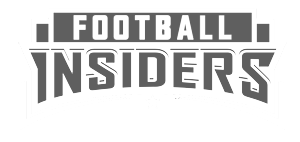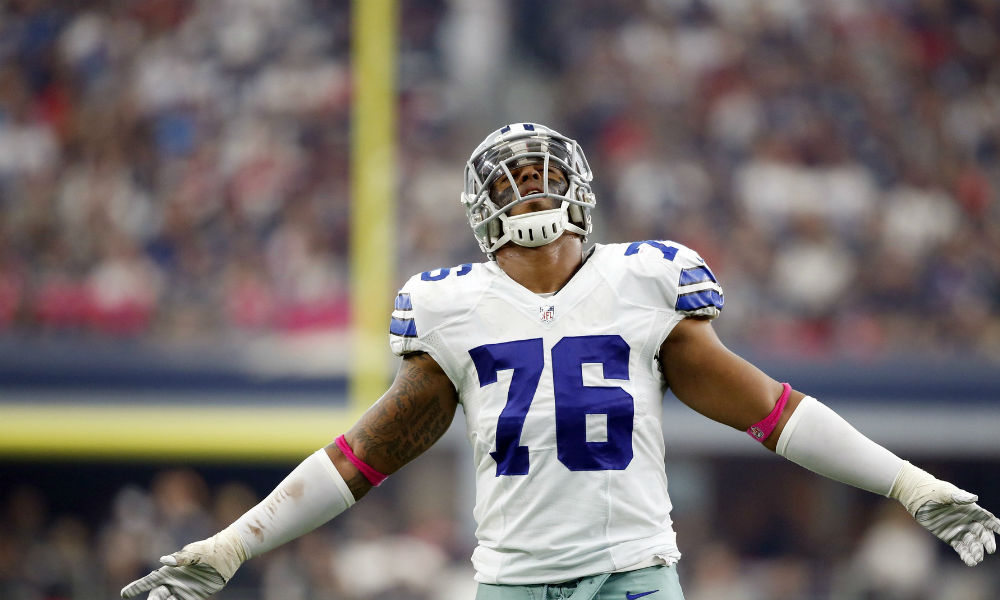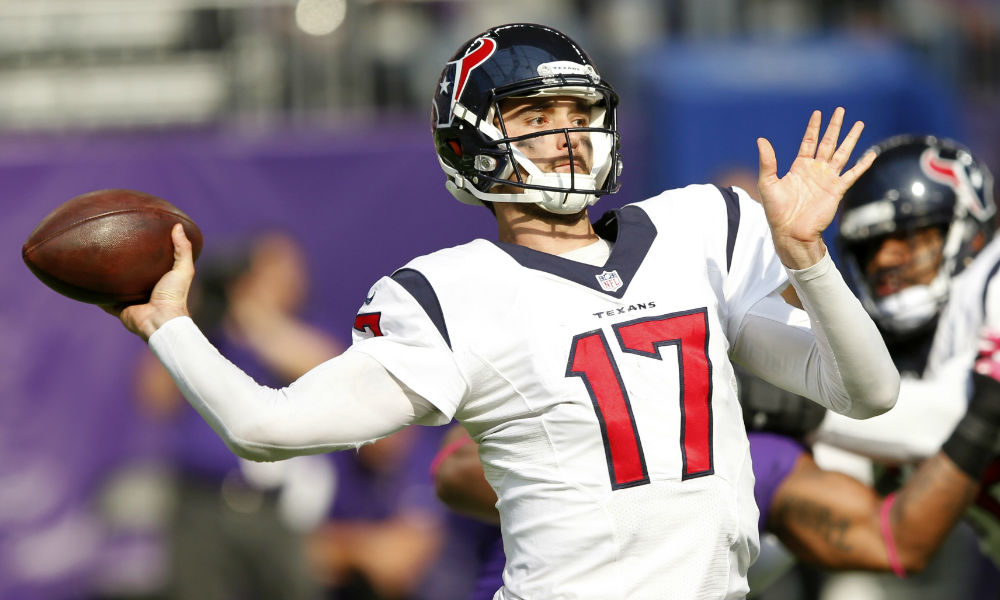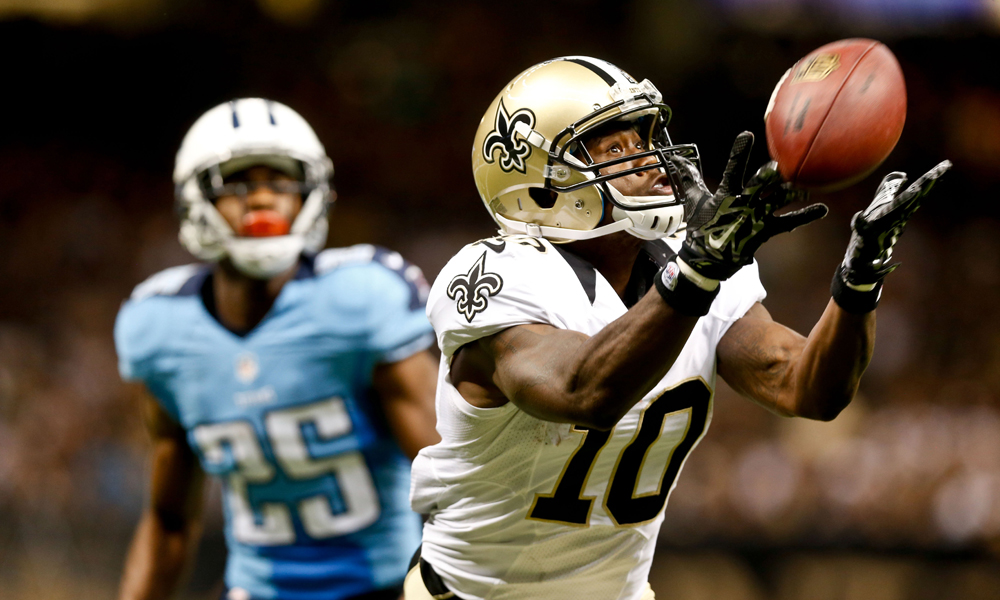News
Five Critical Questions Facing the San Diego Chargers
Discover what potholes lie ahead on San Diego’s path to the postseason.
Also, check out the five critical questions facing the Arizona Cardinals and Cincinnati Bengals.
The Chargers finished 9-7 in each of the first two seasons of the Mike McCoy/Tom Telesco regime. However, the 2013 team overachieved while last year’s squad fell flat when it mattered most.
Can the Chargers get the ship pointed back in the right direction and sail back into the playoffs? These five questions will help determine whether such a playoff push is possible.
Can Philip Rivers stay healthy and engaged?
Rivers has looked like a different player since McCoy came to town in 2013. In their first year together, Rivers won Comeback Player of the Year. In their second season, Rivers was leading the MVP conversation through the first six games of the season until a back injury slowed him down and nearly knocked him out late in the season.
Rivers avoided offseason surgery and was a full participant in OTAs and mini camp. That’s a promising sign, but the real test will come when he takes a hard blindside hit during live action.
The Chargers seem to have no worries, with Telesco insisting earlier this offseason that Rivers still has “a number of good years left in him.”
Whether those years will be spent in San Diego, Los Angeles or elsewhere remains to be seen. The Chargers are still pushing to sign Rivers, 33, to a long-term extension as he enters the final year of his current deal. Rivers has balked at those requests thus far; he has little desire to move to L.A. and wants to see Chargers ownership prove it is committed to building a contender during his final seasons.
Rivers has said all the right things since returning to Chargers Park back in May. But will he remain positive and engaged if the Chargers get off to a slow start and all signs point to an imminent move up the I-5? The Chargers need Rivers at his absolute best if they hope to author a third consecutive winning season.
Can the running game provide the offense with some balance?
It will certainly help Rivers if the Chargers do a better job running the ball. The team couldn’t have done much worse last season, when San Diego ranked No. 30 in rushing yards per game (85.4) and No. 31 in yards per carry (3.4).
San Diego was proactive in improving its running game this offseason. Telesco traded up in the first round to draft Melvin Gordon. He signed road-grating left guard Orlando Franklin as a free agent. And he welcomed back Danny Woodhead, the do-it-all scat back who missed the final 13 games last season with a broken leg.
The Chargers hope Gordon is more like LaDainian Tomlinson and less like Ryan Mathews, who wore out his welcome with repeated injuries and fumbles.
If Gordon can maintain the record-breaking production that made him a national star at Wisconsin, it will slow down opposing pass rushes, open up play-action possibilities and create favorable matchups for tight ends Ladarius Green and Antonio Gates (after the latter comes back from his four-game suspension).
But if Gordon struggles, the offense will be as inconsistent as it was a season ago, when the Chargers ranked in the bottom half of the league in points per game (21.8).
Who plays where on the right side of the offensive line?
This question could be rephrased as: What will the Chargers do with D.J. Fluker?
Option 1: Keep Fluker at right tackle and Johnnie Troutman at right guard. In this scenario, it is conceivable that second-year guard Craig Watts could challenge Troutman for his starting position.
Option 2: Slide Fluker inside to guard and start free-agent addition Joe Barksdale at right tackle.
Neither is an ideal scenario, as Troutman and Barksdale are both flawed players. Troutman received awful grades from Pro Football Focus last season both in run blocking and pass protection. Barksdale faired a little better, although he allowed 8.5 sacks and committed six penalties.
Either way, the Chargers have two openings to fill and only one Fluker to fill them with.
If nothing else, Fluker is confident heading into his third season, even while his positional has yet to be finalized.
“I’m more in shape, focusing on technique, just getting even better,” Fluker said.
Will someone (other than Corey Liuget) step up on the defensive line?
Liuget stands out on San Diego’s defensive line like a diamond in a sea of coal. The Chargers rewarded his impressive play earlier this offseason with a five-year, $58.5 million extension that included $30 million in guaranteed money.
“Corey is hard-work personified,” McCoy said. “He will do whatever it takes to get better and help the team. And he’s still improving. There’s no limit to how good he can be. He has a lot of great football ahead.”
The same cannot be said of the rest of San Diego’s defensive linemen. Kendall Reyes starts at the other defensive end position; unfortunately, his play has leveled off as he failed to build on a promising rookie season in 2012. In between Liuget and Reyes is Ryan Carrethers, a 2014 fifth-round pick who will start at nose tackle after appearing in just six games as a rookie.
The depth is just as dire. Ricardo Mathews is San Diego’s best hope for increased productivity, as his relentless style of play seems to spark the defense at times. Other than Mathews, Mitch Unrein, Sean Lissemore and Damion Square are just big bodies. Sixth-round pick Darius Philon has a chance to develop into a disruptive player, although that’s unlikely to happen this season.
Can the young outside linebackers bring enough heat?
The Chargers lost a lot of experience at outside linebacker when Jarret Johnson retired and Dwight Freeney left as a free agent. Now, San Diego is going green at the position … really green.
Each of San Diego’s top four outside linebackers is a recent draft pick: Melvin Ingram (first round, 2012), Tourek Williams (sixth round, 2013), Jeremiah Attaochu (second round, 2014) and Kyle Emanuel (fifth round, 2015). That kind of youthful energy can be a good thing, especially at a position where speed is so important, but durability and depth are concerns.
Ingram, a difference-maker when healthy, has appeared in just 13 games over the last two seasons due to injuries. Attaochu, who figures to start across from Ingram, missed five games as a rookie because of a hamstring injury and was limited in several others. If Ingram and/or Attaochu miss significant time again this season, the pass rush will be in trouble.
Depth will be less of an issue if Emanuel can make a smooth transition from North Dakota State to the NFL, a jump that has conquered many before him. But according to NDSU head coach Chris Klieman, the Chargers needn’t worry.
“We’re just excited that San Diego took a chance on Kyle from North Dakota State and we know he’ll represent his family and our university exceptionally well,” Klieman said. “We’re going to hear a lot from Kyle Emanuel throughout his career in the NFL.”
The Chargers better hope their pass rush is ready to make some noise. With Peyton Manning, Alex Smith and Derek Carr in the division, a tepid pass-rush is a surefire way to give opponents a green light into the end zone.
What do you expect from the Bolts? Discuss with Michael Lombardo during his weekly NFL Chat on Friday at 2pm EST. But you don’t have to wait until then … you can ask your question now!
News
Buccaneers admit mistake, boot Aguayo
Source: Mike Florio of ProFootballTalk
Powered by WPeMatico
News
Did Bucs put too much pressure on Aguayo?
Source: Mike Florio of ProFootballTalk
Powered by WPeMatico
News
Broncos holding their breath on Derek Wolfe
Source: Mike Florio of ProFootballTalk
Powered by WPeMatico




